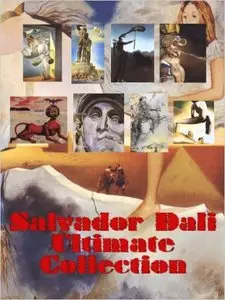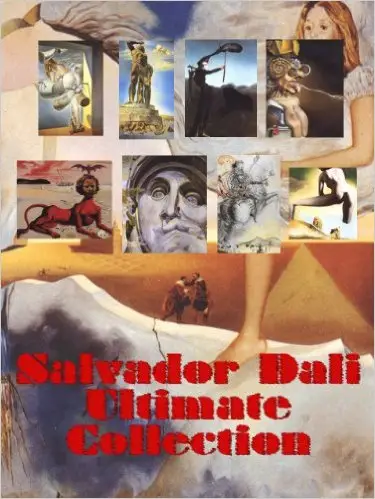"Ultimate Salvador Dali Collection: Modern Art from the Famous Creator" by William Perkins
2012 | EPUB | ASIN: B00A7YP70W | English | 24.8 MB
2012 | EPUB | ASIN: B00A7YP70W | English | 24.8 MB
335 Salvador Dali Paintings !!!
Complete Works from 1925 to 1983!
Amazing Collection in High Quality!
Salvador Domingo Felipe Jacinto Dalí i Domènech, 1st Marqués de Dalí de Pubol (May 11, 1904 – January 23, 1989), known as Salvador Dalí (Catalan pronunciation: [səɫβəˈðo ðəˈɫi]), was a prominent Spanish surrealist painter born in Figueres, Spain.
Dalí was a skilled draftsman, best known for the striking and bizarre images in his surrealist work. His painterly skills are often attributed to the influence of Renaissance masters. His best-known work, The Persistence of Memory, was completed in 1931. Dalí's expansive artistic repertoire included film, sculpture, and photography, in collaboration with a range of artists in a variety of media.
Dalí attributed his "love of everything that is gilded and excessive, my passion for luxury and my love of oriental clothes" to a self-styled "Arab lineage", claiming that his ancestors were descended from the Moors.
Dalí was highly imaginative, and also enjoyed indulging in unusual and grandiose behavior. His eccentric manner and attention-grabbing public actions sometimes drew more attention than his artwork, to the dismay of those who held his work in high esteem, and to the irritation of his critics.
1929 to World War II
In 1929, Dalí collaborated with surrealist film director Luis Buñuel on the short film Un Chien Andalou (An Andalusian Dog). His main contribution was to help Buñuel write the script for the film. Dalí later claimed to have also played a significant role in the filming of the project, but this is not substantiated by contemporary accounts. Also, in August 1929, Dalí met his lifelong and primary muse, inspiration, and future wife Gala, born Elena Ivanovna Diakonova. She was a Russian immigrant ten years his senior, who at that time was married to surrealist poet Paul Éluard. In the same year, Dalí had important professional exhibitions and officially joined the Surrealist group in the Montparnasse quarter of Paris. His work had already been heavily influenced by surrealism for two years. The Surrealists hailed what Dalí called his paranoiac-critical method of accessing the subconscious for greater artistic creativity.
Meanwhile, Dalí's relationship with his father was close to rupture. Don Salvador Dalí y Cusi strongly disapproved of his son's romance with Gala, and saw his connection to the Surrealists as a bad influence on his morals. The last straw was when Don Salvador read in a Barcelona newspaper that his son had recently exhibited in Paris a drawing of the Sacred Heart of Jesus Christ, with a provocative inscription: "Sometimes, I spit for fun on my mother's portrait".
Outraged, Don Salvador demanded that his son recant publicly. Dalí refused, perhaps out of fear of expulsion from the Surrealist group, and was violently thrown out of his paternal home on December 28, 1929. His father told him that he would be disinherited, and that he should never set foot in Cadaqués again. The following summer, Dalí and Gala rented a small fisherman's cabin in a nearby bay at Port Lligat. He bought the place, and over the years enlarged it, gradually building his much beloved villa by the sea. Dalí's father would eventually relent and come to accept his son's companion.
The Persistence of Memory
In 1931, Dalí painted one of his most famous works, The Persistence of Memory, which introduced a surrealistic image of soft, melting pocket watches. The general interpretation of the work is that the soft watches are a rejection of the assumption that time is rigid or deterministic. This idea is supported by other images in the work, such as the wide expanding landscape, and other limp watches shown being devoured by ants.
Dalí and Gala, having lived together since 1929, were married in 1934 in a semi-secret civil ceremony. They later remarried in a Catholic ceremony in 1958.



